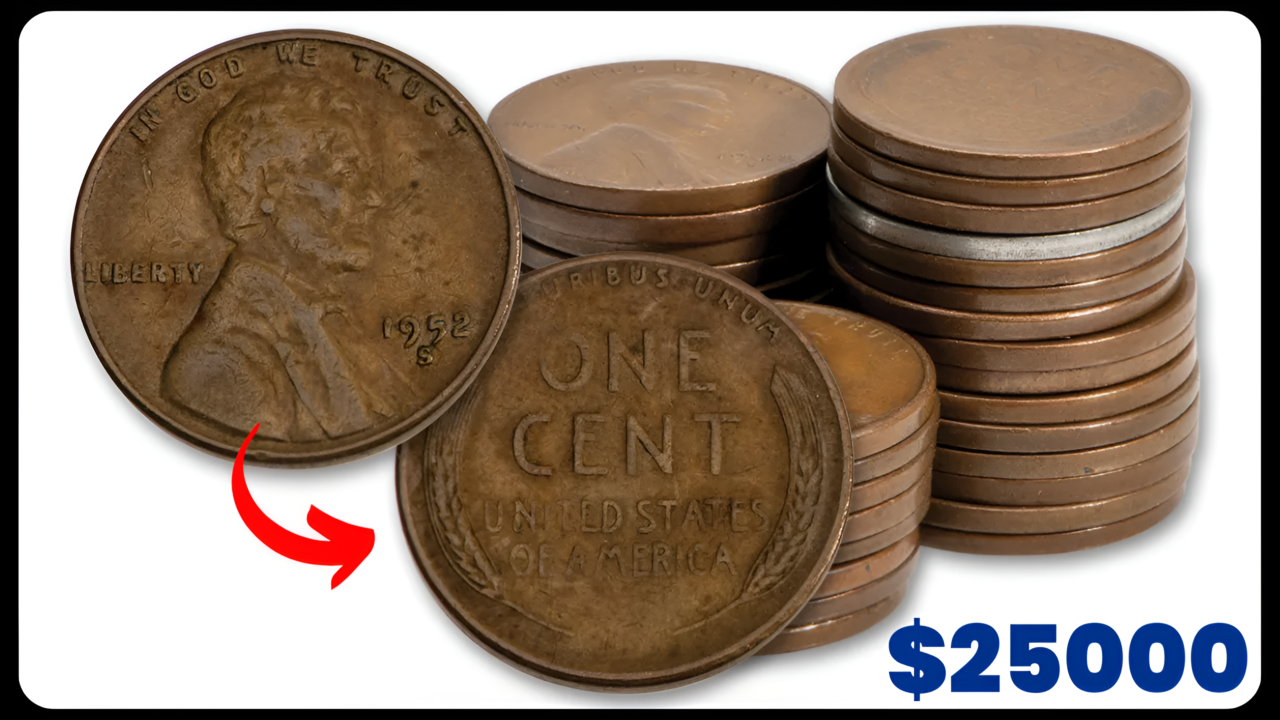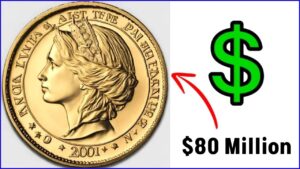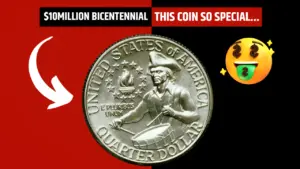When you think of a penny, you probably imagine a small, copper coin worth just one cent. But what if I told you that a single penny could fetch an astonishing $25,000 at auction? That’s exactly what happened with the rare 1922 No-D Lincoln Wheat Cent, a coin that has captured the attention of collectors and enthusiasts worldwide. This fascinating piece of history is more than just a coin it’s a symbol of rarity, craftsmanship, and the enduring allure of numismatics. Let’s dive into the story behind this extraordinary penny and explore why it’s worth so much.
The History of the 1922 No-D Lincoln Wheat Cent
The 1922 No-D Lincoln Wheat Cent is a unique variety of the Lincoln penny, minted during a time of unusual circumstances. In 1922, the Denver Mint was the only facility producing Lincoln cents, as the Philadelphia and San Francisco Mints were focused on striking silver dollars under the Pittman Act. This meant that all pennies minted in 1922 bore the “D” mint mark, indicating their origin at the Denver Mint.
However, during the production process, one of the obverse dies (the side with Lincoln’s portrait) became severely worn and clashed. To address this issue, the mint workers repolished the die, inadvertently removing the “D” mint mark entirely. As a result, a batch of pennies was struck without the mint mark, creating the rare “No-D” variety.
What Makes the 1922 No-D Penny So Special?
The rarity of the 1922 No-D Lincoln Wheat Cent lies in its accidental creation and limited availability. While millions of pennies were minted in 1922, only a small number of No-D coins were produced. This scarcity has made it a highly sought-after item among collectors.
Key Features of the 1922 No-D Penny:
- No Mint Mark: Unlike other Denver-minted coins, this penny lacks the “D” mint mark, making it instantly recognizable.
- Strong Reverse: The most desirable variety is the “Strong Reverse,” which features clear and sharp details on the reverse side of the coin.
- Historical Significance: The coin represents a unique moment in minting history, showcasing the challenges and imperfections of early 20th-century coin production.
The Record-Breaking Sale
The 1922 No-D Lincoln Wheat Cent recently made headlines when it sold for an impressive $25,000 at auction. This record-breaking sale highlights the enduring appeal of rare coins and the lengths collectors will go to acquire them. But why would someone pay such a high price for a penny?
Factors Driving the Value:
- Rarity: The limited number of No-D pennies makes them a prized possession for collectors.
- Condition: Coins in excellent condition, such as those graded by professional services, command higher prices.
- Historical Appeal: The story behind the coin adds to its allure, making it more than just a piece of currency.
- Collector Demand: The competitive nature of numismatics drives up prices for rare and desirable items.
Understanding Coin Grading
One of the key factors influencing the value of the 1922 No-D penny is its condition, which is determined through a process called coin grading. Professional grading services evaluate coins based on their wear, luster, and overall appearance, assigning them a grade on a scale from 1 to 70.
Grading Scale:
- Poor (1): The coin is heavily worn and barely recognizable.
- Fine (20-40): Moderate wear with visible details.
- Mint State (60-70): The coin is in pristine condition, with no signs of wear.
Coins with higher grades, such as Mint State or Very Fine, are more valuable and sought after by collectors. The 1922 No-D penny that sold for $25,000 was likely in exceptional condition, contributing to its high price.
The Appeal of Numismatics
Numismatics, the study and collection of coins, is a hobby that has captivated people for centuries. Rare coins like the 1922 No-D Lincoln Wheat Cent offer a glimpse into history, showcasing the artistry and craftsmanship of minting. For collectors, each coin tells a story, making the pursuit of rare pieces both exciting and rewarding.
Why People Collect Coins:
- Historical Connection: Coins provide a tangible link to the past, offering insights into the culture and economy of different eras.
- Artistic Value: The intricate designs and details of coins make them miniature works of art.
- Investment Potential: Rare coins can appreciate in value over time, making them a smart investment.
- Personal Satisfaction: The thrill of discovering and owning a rare coin is unmatched.
Tips for Aspiring Collectors
If the story of the 1922 No-D penny has sparked your interest in coin collecting, here are some tips to get started:
- Educate Yourself: Learn about different types of coins, their history, and grading standards.
- Start Small: Begin with affordable coins before investing in rare pieces.
- Use Reliable Sources: Purchase coins from reputable dealers or auctions to ensure authenticity.
- Protect Your Collection: Store coins in protective cases to prevent damage and maintain their value.
- Join a Community: Connect with other collectors to share knowledge and experiences.
Final Thoughts
The 1922 No-D Lincoln Wheat Cent is more than just a penny it’s a piece of history, a symbol of rarity, and a testament to the enduring appeal of numismatics. Its record-breaking sale for $25,000 underscores the value that collectors place on unique and significant coins. Whether you’re a seasoned collector or a curious beginner, the world of rare coins offers endless opportunities to explore, learn, and connect with history.
F&Q
Q1: Why is the 1922 No-D penny so rare?
It was accidentally struck without a mint mark due to a worn and repolished die
Q2: What makes the “Strong Reverse” version valuable?
It has sharper reverse details, making it more desirable to collectors
Q3: How much did the rare 1922 No-D penny sell for?
It sold for $25,000 at auction due to its rarity and condition
Q4: What affects a coin’s value the most?
Rarity, condition (grade), historical significance, and collector demand
Q5: How can someone start collecting coins?
Begin with research, buy from trusted sources, and join coin-collecting communities


